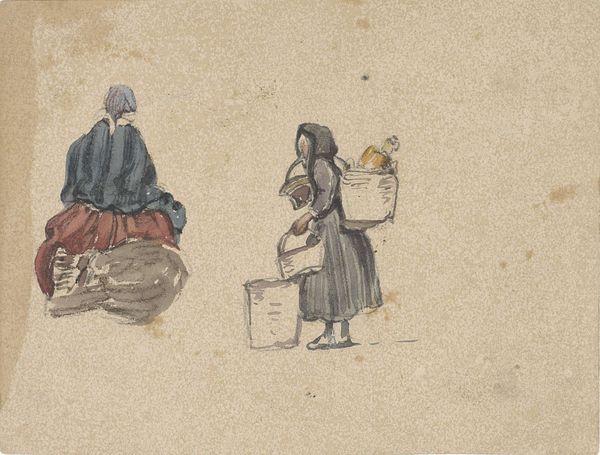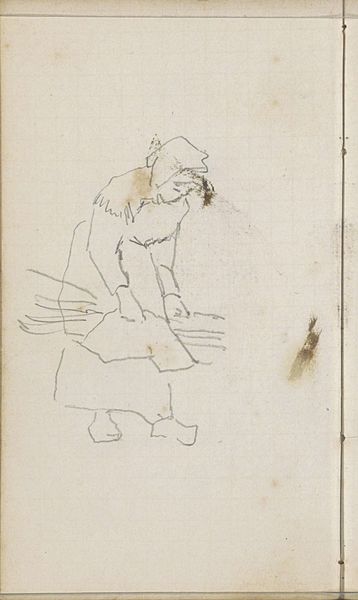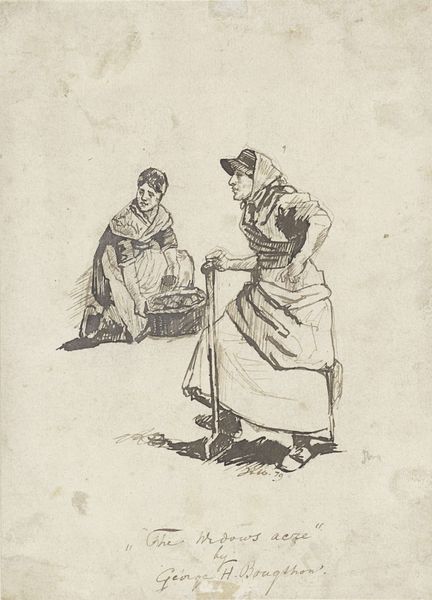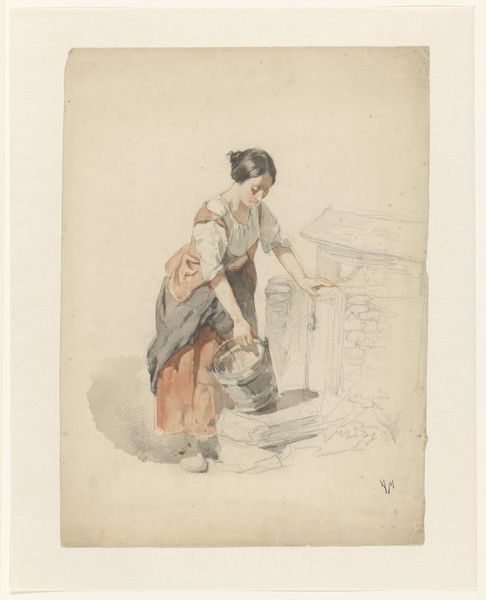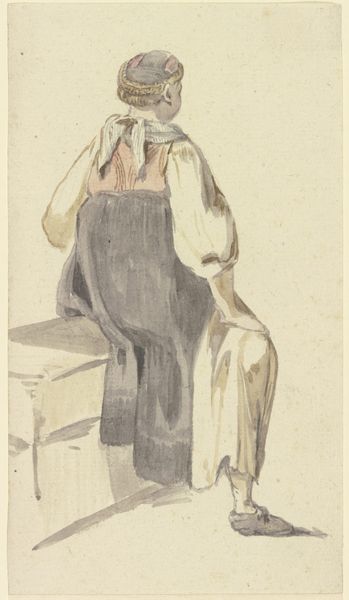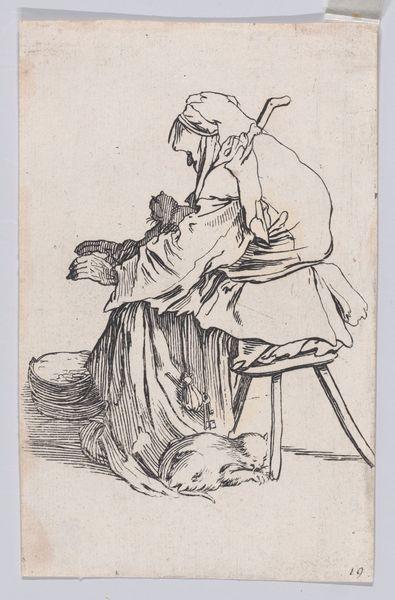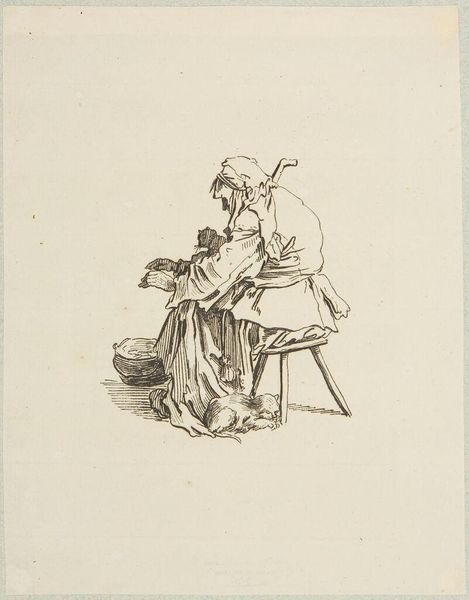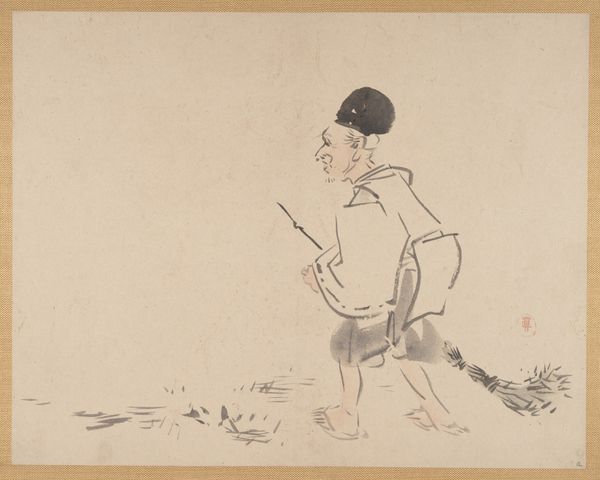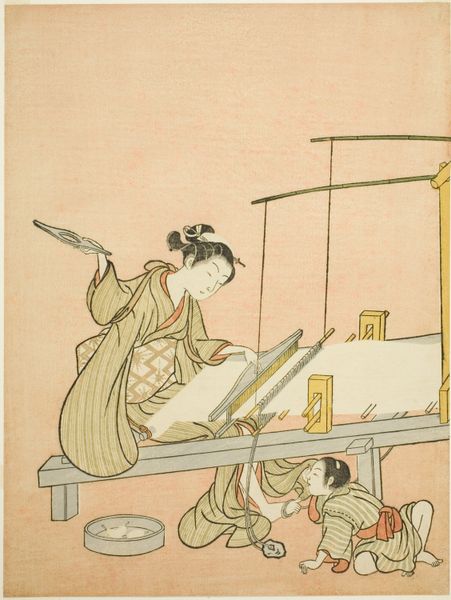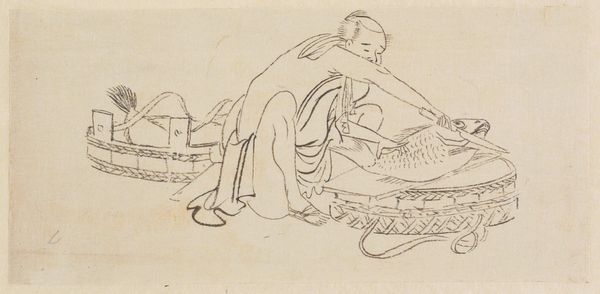
Dimensions: 2 7/8 x 4 7/16 in. (7.3 x 11.27 cm) (sheet)
Copyright: Public Domain
This watercolor titled "Two Washerwomen," attributed to Eugène-Louis Boudin, presents a study in contrasts of form and function. Rendered with delicate washes of color, the artwork uses a subtle palette to evoke the daily lives of working women. The composition is divided between two figures: one kneeling, the other standing at a table. The kneeling figure is enclosed within a voluminous white hood, all but obscuring any individual identity, while the standing figure's costume delineates her silhouette against the stark paper. The sketchy lines of the composition suggest transience. Boudin uses watercolor to capture light and texture. The washes of blue and brown create a semiotic structure where color signifies social roles and material conditions. Notice how the materiality of the watercolor, its ability to blend and fade, mirrors the ephemeral nature of the subject. These visual strategies prompt us to consider not just what is depicted, but how the very act of depiction conveys meaning.
Comments
No comments
Be the first to comment and join the conversation on the ultimate creative platform.
